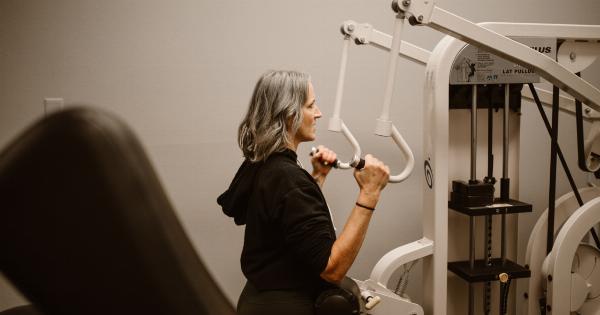Menopause is a natural biological process that marks the end of a woman’s reproductive years. It is defined as the permanent cessation of menstruation and occurs when a woman hasn’t had her period for 12 consecutive months.
Menopause is typically experienced around the age of 45 to 55, but it can also happen earlier or later depending on various factors such as genetics, lifestyle, and overall health.
The Different Stages of Menopause
Menopause can be divided into several stages, each with its own unique characteristics. Understanding these stages can help women navigate through this transition period and manage the associated symptoms effectively.
1. Perimenopause
Perimenopause is the transitional stage leading up to menopause. It typically starts in a woman’s 40s but can begin earlier or later.
During perimenopause, the ovaries gradually produce less estrogen, the hormone responsible for regulating menstruation. This hormonal imbalance can cause irregular periods, hot flashes, night sweats, and vaginal dryness. Perimenopause can last for several years before menopause officially begins.
2. Menopause
Menopause is the stage when a woman has gone 12 consecutive months without menstruation. It signifies the permanent end of reproductive function. Menopause is confirmed once a woman hasn’t had her period for a full year.
At this stage, the ovaries stop releasing eggs, and hormonal fluctuations stabilize. Symptoms such as hot flashes and mood swings may continue for a while but usually diminish over time.
3. Postmenopause
Postmenopause refers to the period following menopause. During postmenopause, menopausal symptoms gradually subside or disappear completely.
Estrogen levels remain low, which can lead to long-term effects such as an increased risk of osteoporosis and heart disease. Maintaining a healthy lifestyle, including regular exercise and a balanced diet, can help reduce these risks and promote overall well-being during postmenopause.
Common Symptoms of Menopause
While every woman’s experience of menopause is unique, there are some common symptoms that many women may encounter during this life phase. These symptoms can vary in severity and duration. Some of the most common symptoms include:.
1. Hot Flashes
Hot flashes are sudden, intense feelings of heat that can cause sweating and flushing of the face and body. They can last for a few seconds to several minutes and often occur at unpredictable intervals.
2. Night Sweats
Night sweats are similar to hot flashes but occur during sleep. They can disrupt restful sleep and lead to fatigue and daytime drowsiness.
3. Irregular Periods
During perimenopause, menstrual cycles may become irregular. Periods may become shorter or longer in duration, and the amount of bleeding may vary. Eventually, periods will stop completely once menopause is reached.
4. Vaginal Dryness
Vaginal dryness is a common symptom of menopause caused by decreased estrogen levels. It can lead to discomfort during sexual intercourse and an increased susceptibility to vaginal infections.
5. Mood Swings
Hormonal fluctuations during menopause can contribute to mood swings, irritability, and changes in emotional well-being. Women may experience anxiety, depression, or difficulty concentrating.
Managing Menopause Symptoms
Although menopause is a natural process, the associated symptoms can sometimes be challenging to manage. Here are some strategies that can help alleviate menopause symptoms:.
1. Hormone Replacement Therapy (HRT)
HRT involves taking estrogen or progesterone to help balance hormone levels in the body. It can relieve hot flashes, vaginal dryness, and other symptoms.
However, HRT is not suitable for everyone, and it’s important to consult with a healthcare professional before considering this option.
2. Lifestyle Modifications
Adopting a healthy lifestyle can make a significant difference in managing menopause symptoms.
Regular exercise, a balanced diet rich in fruits, vegetables, and whole grains, and stress reduction techniques such as yoga or meditation can help alleviate symptoms and promote overall well-being.
3. Alternative Therapies
Some women find relief from menopause symptoms through alternative therapies such as acupuncture, herbal supplements, or mind-body techniques.
It’s important to consult with a qualified practitioner and ensure the safety and efficacy of any alternative treatment option.
4. Supportive Lifestyle Changes
Wearing layers of clothing to manage hot flashes, using water-based lubricants to relieve vaginal dryness, and practicing good sleep hygiene to improve sleep quality can all contribute to a more comfortable menopausal experience.
Taking Charge of Your Menopause Journey
Menopause is a natural and inevitable part of a woman’s life. Each woman experiences menopause differently, and it can be a time of both physical and emotional changes.
By understanding the stages of menopause and recognizing the associated symptoms, women can take proactive steps to manage their health and well-being during this transition period. Seeking support from healthcare professionals, adopting healthy lifestyle habits, and exploring various treatment options can empower women to navigate this new phase of life with confidence and vitality.




























